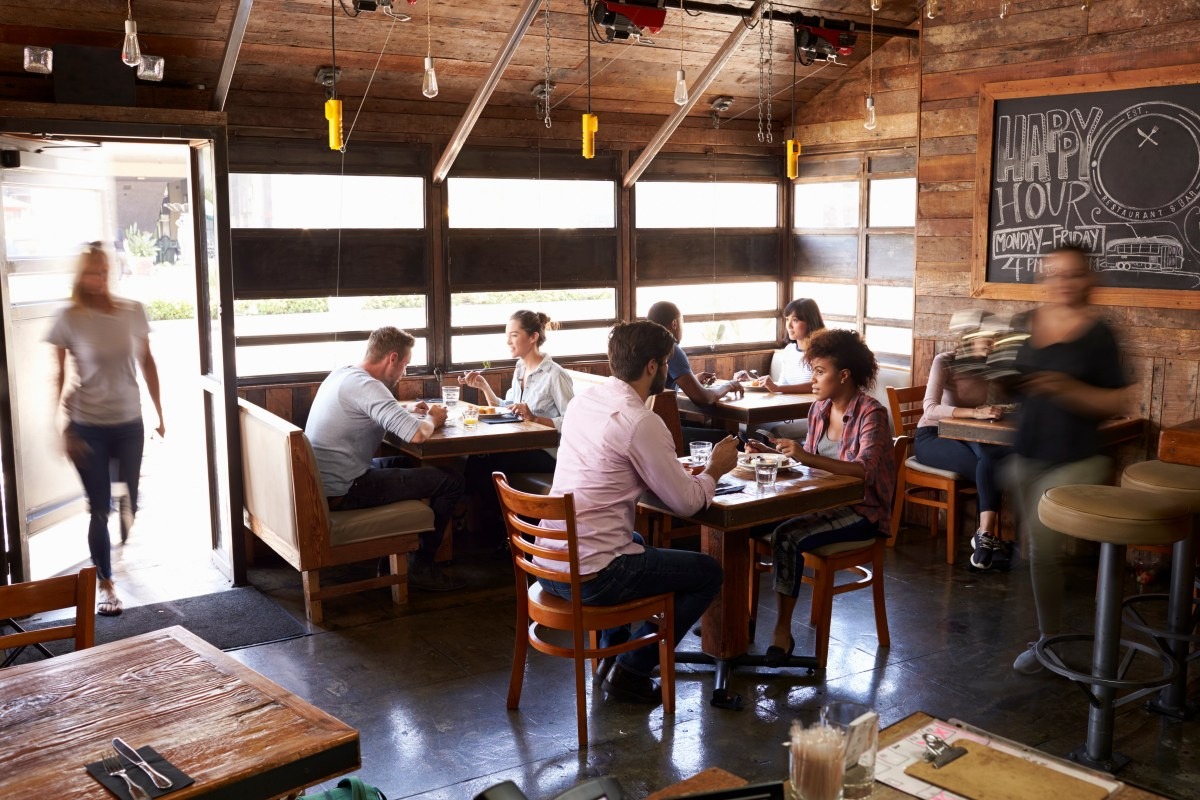How an AI Restaurant Reservation System Reduces No-Shows
Resource
Discover the differences between chatbots and conversational AI for restaurants and learn which one helps capture more bookings and happier guests.
November 3, 2025
•
Resource

Smooth guest communication is at the heart of every great restaurant experience. But when your team is juggling the line, the host stand, full tables, and the inbox all at once, something eventually gives.
That’s why more operators are exploring automation, which ultimately leads to the chatbot vs conversational AI conversation.
Specifically, which one is better? What’s the real difference? And which one can actually help your restaurant deliver better hospitality without losing its personal touch?
Let’s unpack both technologies, compare their strengths, limitations, and key differences, and show how conversational platforms like Hostie are helping restaurants turn missed calls into loyal guests.
A chatbot is an automated tool built around predefined rules and menu-based responses. In a restaurant context, that might mean a website pop-up that asks “What do you need today? (1) Make a reservation, (2) Order take-out, (3) Ask a question”. It then gives canned replies based on what the guest selects.
Because it follows a menu or fixed keyword triggers, a chatbot offers reliable, easy-to-understand guest flows, but only within its limited framework.
Common restaurant uses for a chatbot include:

For many restaurants, these tools are an easy first step toward automation, but their simplicity can also be their biggest limitation.
Chatbots have their place, especially for operators who need a quick, low-maintenance way to manage repetitive inquiries.
The biggest pros are that they’re:
The trade-off, of course, is that chatbots can only go so far. Their rule-based nature limits how “human” they feel, which can create friction when guests need more than simple answers.
That leads to cons like:
For restaurants with mostly straightforward guest flows, a chatbot can be a practical entry point. But as guest expectations rise and interactions stretch beyond the website, the limits of a basic chatbot become very clear.

Conversational AI interprets natural language, understands context, handles multiple steps in a dialogue, and can switch channels (phone, text, email) fluidly.
It goes beyond “choose your option” to “How can I help you today?”. It can interpret “I’d like a table for 6 this Saturday at 7, we’ll be dining outside, one of us is vegetarian, and we may arrive a bit late.”
A platform with conversational AI, like Hostie’s virtual concierge, handles many of the real guest conversations your team juggles every day.
For example, Wayfare Tavern was preparing to relocate and faced a deluge of guest questions via phone. They brought Hostie on board in May 2025, and in just three months, the system answered 11,000 calls and managed 66% of calls without needing a host transfer.
With Hostie’s virtual concierge managing so many of the calls, guests received quick, personal service while the team focused on in-person hospitality.
It’s a clear example of what conversational AI does best: handle real guest conversations with warmth and accuracy, even when your team can’t get to the phone.
Like any technology, conversational AI brings big advantages and a few things to consider before diving in.

Conversational AI is ideal when guest interactions go beyond simple questions. It listens, adapts, helping restaurants deliver genuine hospitality even when staff are busy.
The biggest pros are that it:
Conversational AI requires more setup and care than a basic chatbot. To perform well, it needs time to learn your restaurant’s tone and systems.
That means:
Still, for restaurants committed to delivering five-star hospitality across every guest touchpoint, conversational AI is without a doubt the forward-looking choice.

Chatbots and conversational AI both help restaurants automate guest communication, but they work in different ways.
Here’s how they compare when it comes to real hospitality and day-to-day operations.
If you are running a smaller venue with modest traffic, limited reservation complexity, mostly standard FAQs, and healthy staff coverage, a chatbot might fit your needs and your budget. It can answer basic queries and is quick to deploy.
But if you’re running a busy venue or managing several locations, where guest requests never stop coming, a virtual concierge system with conversational AI capabilities is the smarter move.
Unlike a simple chatbot, it’s part of a larger, connected platform that ties into your reservations, phone lines, and guest communication tools.
Hostie’s virtual concierge’s results speak for themselves: Harborview Restaurant and Bar now automates 84% of its calls with a virtual concierge, while The Slanted Door Group boosted over-the-phone covers by 56% after adopting Hostie’s technology.
At the end of the day, it’s about giving every guest the same warm welcome, whether they walk through your doors or call during the dinner rush. And that’s where an integrated virtual concierge system like Hostie truly shines.
A chatbot handles simple tasks effectively. Conversational AI takes things to the next level with natural language, multi-channel support, deeper engagement, and better guest intent capture.
For operators who want to simplify guest communication and elevate the experience from “menu-button” automation to genuine conversational engagement, conversational AI is the future of restaurant guest service.
Curious what this could look like in your dining room? Start a free trial and let Hostie pick up the next call for you.